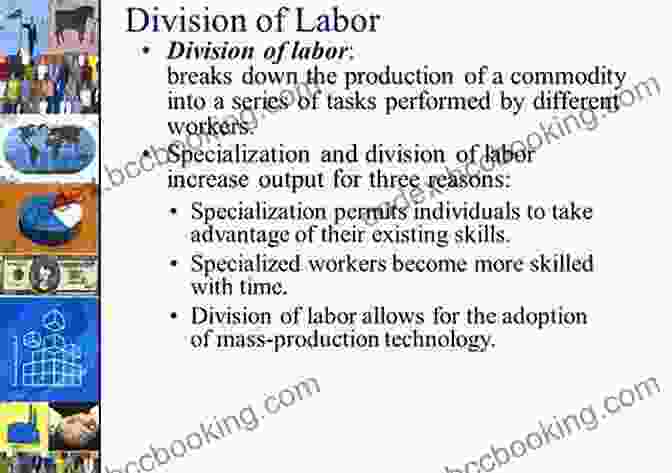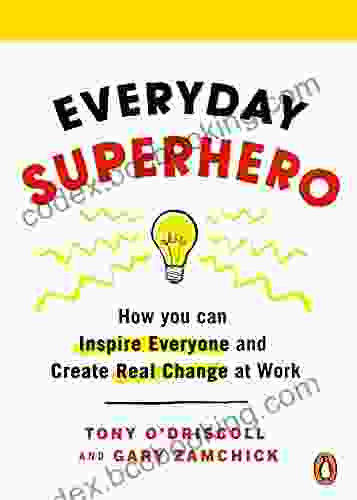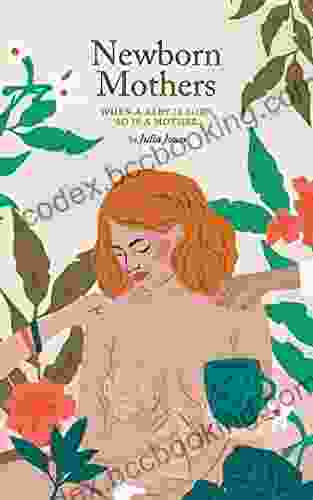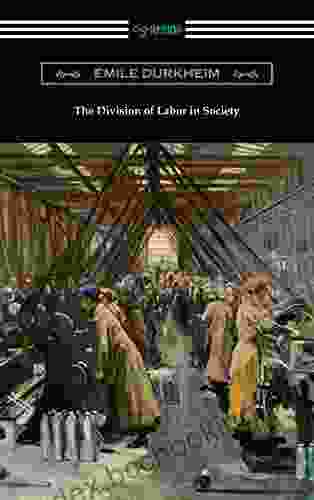The Division of Labor in Society: A Comprehensive Guide

4.5 out of 5
| Language | : | English |
| File size | : | 3841 KB |
| Text-to-Speech | : | Enabled |
| Screen Reader | : | Supported |
| Enhanced typesetting | : | Enabled |
| Word Wise | : | Enabled |
| Print length | : | 412 pages |
| Lending | : | Enabled |
The division of labor is a fundamental concept in sociology and economics, referring to the distribution of tasks and responsibilities within a society or organization. It is a complex and multifaceted phenomenon that has evolved over time, shaping human societies in profound ways. In this comprehensive guide, we will delve into the history, evolution, and impact of the division of labor on society, exploring its sociological, economic, and historical implications.
Historical Origins
The concept of the division of labor has its roots in the earliest human societies. In hunter-gatherer societies, tasks were typically divided based on gender, with men specializing in hunting and women in gathering. As societies grew and became more complex, the division of labor became more specialized, with the emergence of specialized occupations such as farmers, artisans, and merchants.

Economic Implications
The division of labor has a profound impact on the economy. By specializing in different tasks, individuals can become more efficient and productive. This increased productivity leads to higher levels of output, economic growth, and technological innovation. The division of labor also facilitates trade and commerce, as individuals can exchange goods and services that they are specialized in producing.
Social Implications
In addition to its economic implications, the division of labor also has a significant impact on society. As individuals specialize in different tasks, they develop unique skills and knowledge. This specialization can lead to the formation of occupational groups and social stratification. The division of labor can also shape cultural norms and values, as different occupations are associated with different levels of prestige and social status.
Theories of the Division of Labor
Over the centuries, sociologists and economists have developed numerous theories to explain the division of labor. Some of the most influential theories include:
- Adam Smith's Theory of Pin Manufacturing: Smith argued that the division of labor increases productivity by allowing workers to specialize in specific tasks and develop greater skill and efficiency.
- Karl Marx's Theory of Alienation: Marx argued that the division of labor leads to alienation and exploitation by separating workers from the products of their labor and from their fellow workers.
- Émile Durkheim's Theory of Functionalism: Durkheim viewed the division of labor as a necessary aspect of social integration, as it creates interdependence between different groups and occupations.
- Max Weber's Theory of Bureaucracy: Weber argued that the division of labor is a key characteristic of bureaucracy, as it creates a hierarchical structure and specialized roles within organizations.
The division of labor is a complex and multifaceted phenomenon that has shaped human societies throughout history. It plays a critical role in the economy, society, and culture. Understanding the division of labor is essential for comprehending the functioning of modern societies and the challenges and opportunities that they face.
4.5 out of 5
| Language | : | English |
| File size | : | 3841 KB |
| Text-to-Speech | : | Enabled |
| Screen Reader | : | Supported |
| Enhanced typesetting | : | Enabled |
| Word Wise | : | Enabled |
| Print length | : | 412 pages |
| Lending | : | Enabled |
Do you want to contribute by writing guest posts on this blog?
Please contact us and send us a resume of previous articles that you have written.
 Book
Book Novel
Novel Page
Page Chapter
Chapter Text
Text Story
Story Genre
Genre Reader
Reader Library
Library Paperback
Paperback E-book
E-book Magazine
Magazine Newspaper
Newspaper Paragraph
Paragraph Sentence
Sentence Bookmark
Bookmark Shelf
Shelf Glossary
Glossary Bibliography
Bibliography Foreword
Foreword Preface
Preface Synopsis
Synopsis Annotation
Annotation Footnote
Footnote Manuscript
Manuscript Scroll
Scroll Codex
Codex Tome
Tome Bestseller
Bestseller Classics
Classics Library card
Library card Narrative
Narrative Biography
Biography Autobiography
Autobiography Memoir
Memoir Reference
Reference Encyclopedia
Encyclopedia Michelle Elaine
Michelle Elaine Emily Raij
Emily Raij Emily Ross
Emily Ross Maxine Bedat
Maxine Bedat Rael Isacowitz
Rael Isacowitz Lali Duperti
Lali Duperti Ellyn Satter
Ellyn Satter Eugene Fitch Ware
Eugene Fitch Ware Eniola Aluko
Eniola Aluko Ellen Lewin
Ellen Lewin Rebecca Duvall Scott
Rebecca Duvall Scott Ugo Bardi
Ugo Bardi Sally Huss
Sally Huss Jason Goodwin
Jason Goodwin Emma Lock
Emma Lock Samantha Hahn
Samantha Hahn Small Footprint Press
Small Footprint Press Joe Hart
Joe Hart Meg Long
Meg Long Emily Design
Emily Design
Light bulbAdvertise smarter! Our strategic ad space ensures maximum exposure. Reserve your spot today!

 Henry GreenIgnite Your Leadership: How You Can Inspire Everyone and Create Real Change...
Henry GreenIgnite Your Leadership: How You Can Inspire Everyone and Create Real Change...
 Mario Benedetti200 Funny and Silly Would You Rather Questions to Keep You Laughing on Long...
Mario Benedetti200 Funny and Silly Would You Rather Questions to Keep You Laughing on Long... Sidney CoxFollow ·13.7k
Sidney CoxFollow ·13.7k Fernando PessoaFollow ·8.5k
Fernando PessoaFollow ·8.5k Gavin MitchellFollow ·5.6k
Gavin MitchellFollow ·5.6k Yasunari KawabataFollow ·13.2k
Yasunari KawabataFollow ·13.2k Miguel de CervantesFollow ·10.1k
Miguel de CervantesFollow ·10.1k José MartíFollow ·14.7k
José MartíFollow ·14.7k Richard WrightFollow ·17.7k
Richard WrightFollow ·17.7k Rick NelsonFollow ·9.8k
Rick NelsonFollow ·9.8k

 Isaias Blair
Isaias BlairEscape to Sunrise Cottage: A Captivating Read You Won't...
Are you ready for a...

 Bradley Dixon
Bradley DixonWhen Baby Is Born, So Is Mother: A Comprehensive Guide to...
Giving birth is a...

 Mario Simmons
Mario SimmonsPhotographic Journal of Cruise Around South America: A...
Embark on an Extraordinary Expedition ...

 Langston Hughes
Langston HughesDream Achieved: Unlocking the Power Within to Make Your...
In the tapestry...
4.5 out of 5
| Language | : | English |
| File size | : | 3841 KB |
| Text-to-Speech | : | Enabled |
| Screen Reader | : | Supported |
| Enhanced typesetting | : | Enabled |
| Word Wise | : | Enabled |
| Print length | : | 412 pages |
| Lending | : | Enabled |












